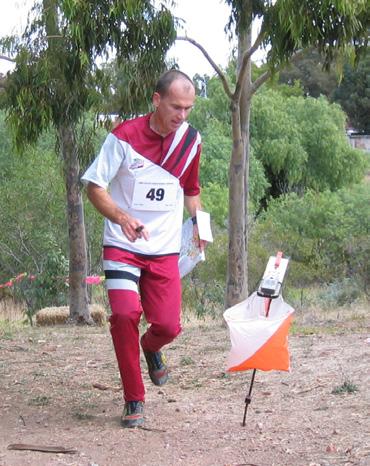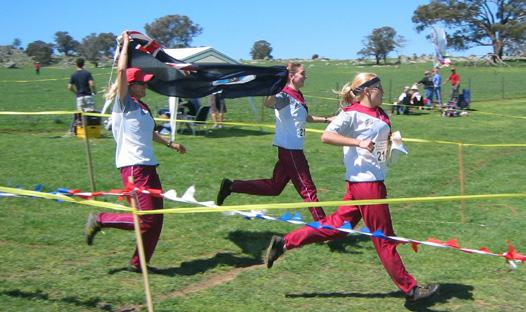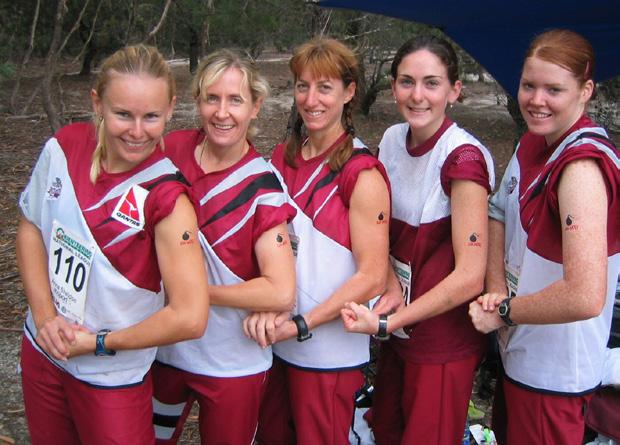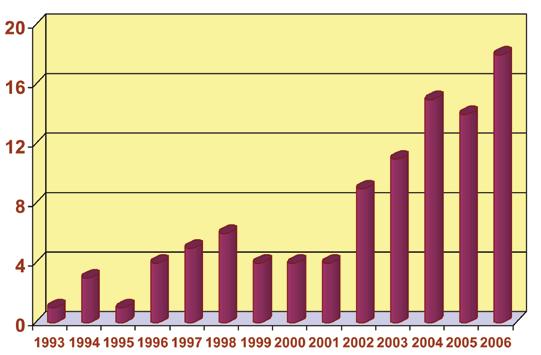
13 minute read
ORIENTEERING DEVELOPMENT
Ben Rattray, Director (Development)
A New Year – a New Season
This year there is an action packed event calendar. I can’t wait for all the quality orienteering I’m going to be able to fit in. There is Easter in my old stomping ground, the first ever Junior World Championships (JWOC) held outside Europe, and then the Oceania Championships. That’s not to mention the other national league events I will run, a few internationals and the improving domestic state calendar. There is however a continual debate about various aspects of our calendar and the balance between the number of events, event standards and the strain on clubs and volunteers. There is inevitably a balancing act required to provide a quality season, and there are different views on how this should be achieved. I have put my thoughts into a preview of a fantasy event calendar that I hope shows how and why we need to carefully plan our calendars in the future.
Fantasy Calendar
What follows is a preview of a made-up year, as if it were real.
It’s the start of a new year in the future, and I must admit I’m pretty excited about the calendar, but I have been like that for months. The full schedule posting (dates and locations at least) came out a full six months before the year started. It has given everyone plenty of planning time, and even better, incentive for other sports such as adventure racing to plan around the orienteering calendar. I will be able to check out most details of events on-line closer to the event, probably when I also enter online, a quick and simple process that saves me time and money.
Internationally
The IOF has developed the elite World Cup schedule and many of our top runners are able to attend the full series with the big sponsorship money now in the sport. The money stretches as far as us and between Australia and New Zealand we are looking forward to hosting a spectacular leg of the World Cup, complete with large screens in the assembly area for spectators, GPS tracking, and cameras in the forest and mounted onto runners, with significant television coverage. Australia and New Zealand compete regularly and the majority of major events held in each country do not clash, allowing the keen to attend more races of the highest quality. The Oceania Championships have developed and everyone gets a great opportunity to match themselves against the best in the region every four years. The schools teams (AUS-NZ) do battle every year with alternate countries hosting the “Future Stars” event. The Australian Schools “Future Stars” team, once the Schools honours team, are able to gain valuable international experience in their development towards potential JWOC representation. Elites (Bushrangers) compete in a series every year (sometimes twice) with alternate hosting arrangements allowing valuable experience for our developing senior internationals.
MAIN POINTS
F World Cup attendance F World Cup hosting F Australia - New Zealand calendar F Oceania Championships F Future Stars event F Bushrangers series
Nationally
Australia’s regular national carnivals, Easter and National Champions week are flourishing. The state rotation of events continues and the abundance of mappers are well utilised to provide challenges in terms of both areas and mapping interpretation. The major carnivals continue to attract the orienteering faithful but are also now well attended by less experienced orienteers who relish the big event atmosphere. Clubs have a strong presence and are much of the reason for the larger attendances, often travelling by team bus. Start lists are much longer than they used to be ensuring there is always a buzz around the assembly area with all the people. It is now viable for larger catering companies to attend events and a choice is available to eat after the event, even espresso. The National League continues and elite state teams are very distinct in their sponsored outfits. The format has changed little from its current form, with rounds at the major carnivals and two or three other weekends. New Zealand appears regularly at the event and there is pressure to include them as an official team in the competition, with a permanent round in New Zealand each
year. There are three relays in the calendar improving the team camaraderie and sponsors provide prizes for the overall series as well as individual races. The commentary at the events tops off the sensational atmosphere and the events are regularly web-cast live including the commentary, GPS tracking and photos. The Junior National League largely follows the National League season although holds it own juniors-only round every year. The competition has grown sufficiently so that each state fields full junior teams at each round. There is a smaller elite series, predominantly developed for the south-eastern state competitors using existing events through the autumn. The Eureka challenge is back on the calendar as a great event to kick-off the season. It’s great competitive training for the elites and it ensures some of the early state events are well attended. A fairly recent addition to the calendar is the multi-leg night relay. The single class relay, sharing similarities with the large Swedish relays Tiomila and 25-Manna, consists of both night and day legs and includes requirements for a number of different age classes of both male and female competitors. The event is located well so that members from at least three states are within relatively easy distance. The relay allows clubs (and some corporate groups) to enter a number of teams in what ends up being a very social 24 hours in or near the assembly paddock. The relay is fast becoming the highlight of the yearly calendar for clubs as both a competitive and social outlet.
MAJOR POINTS
F Major carnivals F National League F Elite Series F Multi-leg night relay
Locally
The local calendar fits in well with the national calendar, I don’t need to miss anything major but there is enough on to keep those who only orienteer locally entertained throughout the year. All regional centres have a local series (generally a combination of score, mass start and sprint formats in a range of parks, streets and forest) which are extremely well attended. The events continue to be the main introductory format of our sport but the competitor standard can be quite high and the challenges constant meaning that all orienteers find the formats fun and worth attending. Testament to this, elites always seem to be present and use it as useful training for the coming season. Course-setting is at an extremely high level and the different disciplines (sprint, middle and long) are well distinguished and all well respected for the different challenges on offer. Members are not so worried about “converting” participants to the bush form and a consistent percentage will attend both anyway. In the major regional centres club league series are held providing healthy competition between clubs (and teams) with little need for far travel. The events are professional and well run, and a dedicated section ensures a warm and helpful atmosphere for the social and newcomers to the sport. It means everyone gets together and a strong club atmosphere and community is created. The smell of barbeques is common and almost everyone will stay around for at least a little while after their run. The local areas are all well mapped, their worth as a common venue acknowledged and course setters are well trained in providing interesting challenges in what used to be often seen as an uninteresting or unusable area. Regional centres cover most of populated Australia and all states have a few centres. In South Australia, Adelaide and Port Lincoln have been joined by Mount Gambier as a recent regional centre. Larger regional centres hold major events every 4-5 weeks and smaller centres at roughly half that rate. In the other weeks centres generally hold low key events or kept free for increasingly popular club trainings and social gatherings. The hosting of a major event creates a feeling of pride in the region and the standards are generally quite high. In effect the schedule creates a relatively low burden (few major events in any one region) on regions as well as incentive for travel through the state regions for those chasing more major events. The schedule also means that competitors in major cities such as Sydney can still run a few major state events in the year with little travel required.
MAJOR POINTS
F Regional centres F Event disciplines F Rotation of major events F Regional leagues F Use of areas F Atmosphere
Mountain Bike
Mountain bike orienteering has continued its growth and a lot of cyclists include a few events in their training calendar boosting attendance. At the top level, Australian Mountain-bike orienteering is highly competitive and a short National MTBO League season is held to fit in well with the regular mountain bike season. The National MTBO League attracts substantial sponsorship, particularly from cycling companies and a regular MTBO section is carried in the major cycling magazines. That’s my wish-list. Maybe one day it will turn out like that. As for now, enjoy the 2007 season, whatever it holds!
Development Tips – Sponsorship
1. Have a clear outline of what you can offer a company, as well as what they can offer you and a process by which you can evaluate the outcome. Companies like to be able to justify the sponsorship. 2. Approach a number of companies with a professional looking document and be patient. Some companies you will need to be “chased-up”. 3. Find out who your local members work for. A lot of sponsorship develops from contacts you already have, even if you don’t know it. 4. Don’t just approach companies you can think of a direct link with, they are probably the companies that are being bombarded with sponsorship proposals. The Southern Arrows (SA’s elite team) are likely to sign with a number of companies you would not have thought would be interested in sponsoring orienteering. 5. Utilise Orienteering Australia and States resources where possible and share experiences, there is no point re-inventing the wheel…
If you have any tips, PLEASE email them to: oa_development@netspeed.com.au Good tips will be published with acknowledgements in subsequent editions. Development Resources
Orienteering Australia is creating development resources. Everyone can access them through the Orienteering Australia website:
www.orienteering.asn.au/promotion/devel/
Please take advantage of them and check regularly for updates.
The Queensland The Queensland Cyclones Cyclones
A Storm Brewing? A Storm Brewing?
Compiled by Wendy Read, Thorlene Egerton & Anna Sheldon

Secure your outdoor furniture and have your torch and transistor radio handy... here come “The Cyclones”.
Cyclone History
A quick skim over the archives reveals moderate Cyclone activity from Queensland through the latter part of the 20th century, (TC Scott, TC Melissa, TC Lorenzo, TC Michelle). Although able to hold their own after breaking away from the “Outer States” team, long distance travel (usually over land) to NOL events with little or no financial support weakened the team to a point where The Cyclones began to peter out. However since 2003, continued significant financial and managerial support from Orienteering Queensland has brought about an escalation of the frequency and intensity of Cyclonic activity, interestingly coinciding with increased global warming. If recent successes of the Queensland Schools Team (1st 2005 and equal 1st 2006) and the JNOL Team (1st 2006) are any indication of future Cyclone activity, then batten down the hatches!
Global Warming? – Queensland is Hot!
Recent climate patterns have generally seen Cyclones with female names develop as higher category storms causing moderate to severe damage to neighbouring states. Emerging from a deep depression in 2004, members of the “Bomb Squad” (female cyclones TC Anna, TC Julia & TC Wendy) surged to second place in the Australian Champs Relay at Clonalton, NSW, a first for The Cyclones! In May 2005, a severe Cyclone hit the Rylstone region resulting in the first ever NOL round win for the squad. In 2006, the junior Cyclones blew away the rest of the field to win the JNOL trophy and the women, with the inclusion of TC Rachel, stormed the relay podium again.
Off the Radar

Cyclones main fundraising activity is the running of the Summer Park Sprint series. Our attempts to sell fundraising chocolate and cleanskin wine have usually proved counterproductive to our training efforts, neutralising any benefits of our traditional long Saturday morning team runs through the forests of Mt Coot-tha. Cyclones are the ultimate cross-trainers. During the ‘eye’ of the orienteering season, squad members regularly participate (with varying degrees of skill and success) in Rogaining, Adventure Team Name: The Cyclones State: Queensland NOL 2006: 5th Team Coach: Geoff “The Weatherman” Peck Manager: Terry Cavanagh Website: http://www.omaster.com.au/cyclones/ Weekly Weather Reports: Mathieu McGuire
Racing, Physics Olympiads, Tap Dancing, Mountain Biking, Rock Climbing, Kayaking, Surfing, Athletics, Road Cycling, Fire Twirling, Skiing, Bushwalking, as well as stopping for the odd coffee. Go and chat to them sometime to find out just who does what in their spare (ha ha) time! Despite generous support from OQ, the funding dollar stops there. The state of our squad uniforms is testimony to our lack of sponsorship. Indeed, it will probably rain in Queensland before we get new kit, but one day, we too will wear slick, speedy O gear. We are poor, but having fun in our storm coloured pajama suits! Thankfully the Queensland Cyclones’ selection policy does not reflect the Bureau of Meteorolgy’s tropical cyclone naming protocol, whereby signicant cyclones are ‘retired’ once they have wreaked havoc on Australia. Neither is selection constrained by alphabetical sequence of first names – keep a close watch on the movements of TC Olly, TC Laurina, TC Kieran, TC Bridget and TC Simon especially around the Dubbo region in mid-2007. Despite TC Wendy being marked for retirement by the Qld BoM, policy states that decaying cyclones can retain their names as they may regenerate. In fact, team selection has been complicated at times by the slow rate of decay and re-intensification of significant older cyclones!!
Long Range Forecast
Cyclones coach, Geoff “The Weatherman” Peck, predicts greater devastation to come in extensive regions of southern Australia in 2007 and beyond. With leadership shown by team mascot TC Larry the Wedgetailed Eagle, we look forward to stronger performances from the male contingent of the Cyclones team in years to come. To ensure southern states continue to be buffeted by cyclonic winds and torrential rain, a rich pool of quality athletes is developing, ready to create orienteering havoc over the next few years. Under the guidance of Rob Simson and Fiona Calabro, talented juniors TC Scott Simson – progress from Mini, the Original Cyclone to Junior and then on to Senior Cyclones Squads. Combined with the school’s program, success at the junior level has come about primarily through the result of many years of hard work by those at this developmental level. The trick, however, will be to maintain a climate that continues to develop persistent and tenacious Cyclones.

Cyclones Timeline




1993 TC Scott (Simson) 1994 TC Rachel (Nolan) 1995 1996 TC Lance (Read) TC Mark (Nemeth) 1997 TC Nino (Calabro) TC Ben (Schulz) TC Lorenzo (Calabro) 1998 TC Melissa (Thomas) TC Kerryn (Thomas) 1999 TC Anna (Sheldon) 2000 TC Michelle (Scott) 2001 2002 TC Dave (Moran) TC Nathan (Lawley) TC Thor (Egerton) 2003 TC Wendy (Read) TC Heike (Torggeler) TC Julia (Davies) TC Ainsley (Cavanagh) 2004 TC Torgeir (Watne) TC Dane (Cavanagh) TC Ian (Anderson) TC Ruth (Burrill) TC Clair (Hawkins) 2005 TC Matt (Bourke) TC James (Sheldon) TC Gayle (QuantockSimson) TC Kieran (Sullivan) 2006 TC Jukka (Oikarinnen) TC Daniel (Stott) TC Peter (Sheldon) TC Laurina (Neumann) TC Rachel (Effeney) TC Bridget (Anderson) TC Grace (Burrill) TC Michelle (Cantwell) TC Clare (Leung)











